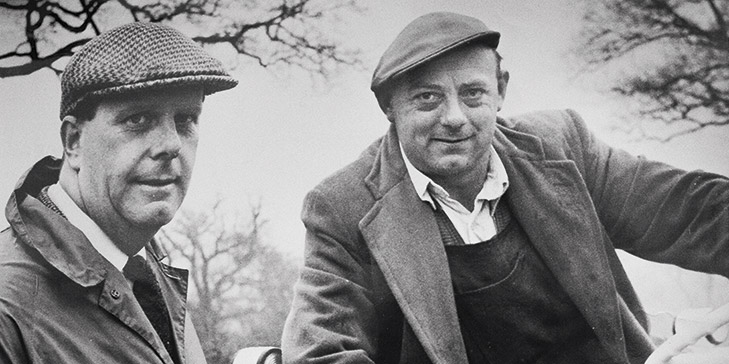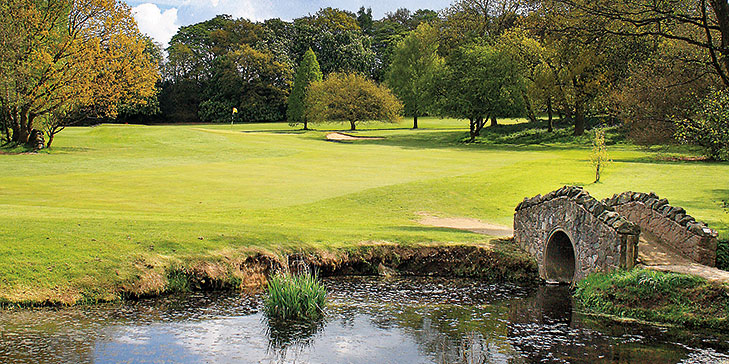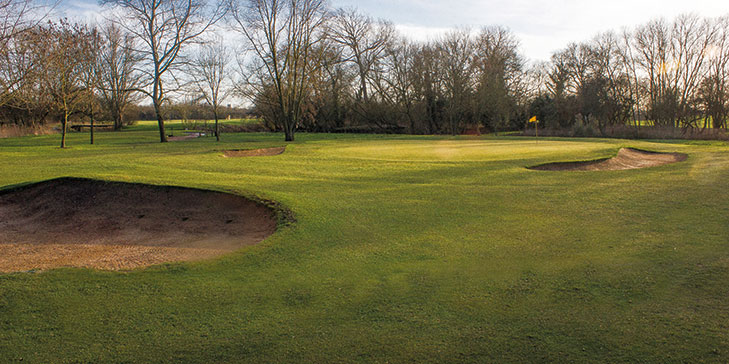Writing in the UK’s Observer newspaper in 1970, golf correspondent Peter Dobereiner told the world that David Tucker had developed a philosophy that could be one of the most valuable contributions to the game since the introduction of the rubber-cored ball. Yet now, Tucker is practically forgotten.
Born in Leicestershire in 1925, Tucker volunteered at 17 and served in the Royal Navy. After the War, he trained as an architect and worked for Derbyshire County Council. He set up his own practice in 1954 in Loughborough before moving it to nearby Woodhouse Eaves.
Tucker’s ancestors were founding members of Longcliffe GC in 1906 and his own love of golf began at an early age. He became a first team Leicestershire golfer and the frequent foursomes partner of Guy Wolstenholme. Tucker might have simply continued to enjoy golf as a comfortable insider at Longcliffe, where he was club champion in 1953. But he saw a wider picture. He believed golf was too exclusive, inaccessible and expensive for ordinary working people, so became an evangelist for affordable golf.
While at Derbyshire County Council, Tucker took it upon himself to try to persuade colleagues about the clean air, health and social advantages, especially for the local miners, of playing golf regularly.
But the defining moment for Tucker’s golfing philosophy came at a land auction, where he made a spur-of-the-moment decision to purchase 60 acres of farmland in the heart of Charnwood Forest. This action changed his life.
 Tucker’s first golf course project, Lingdale GC in Leicestershire, UK, was completed with the help of just one workman, Karl Senkpiehl
Tucker’s first golf course project, Lingdale GC in Leicestershire, UK, was completed with the help of just one workman, Karl Senkpiehl
Tucker wanted to demonstrate that a golf course did not have to be a multi-million project. Having taken the risk of buying the land using his own funds, he set about building his first golf course with the help of just one workman.
The project was so financially constrained that before any work could be undertaken, one last harvest of barley was collected and sold to alleviate costs. Letters were sent out to prospective members and, quicker than he ever dared to hope, Tucker had gathered enough money to complete the golf course.
From the outset, his aim was to build a ‘natural’ golf course that would be accessible, enjoyable and economically viable for ordinary folk, especially the neglected mining communities in Derbyshire and Leicestershire. The original clubhouse was no more than a shed for changing shoes.
Dobereiner described Tucker’s philosophy as ‘primitive golf’. It was meant as a compliment, but did Tucker a disservice. Anybody who visits this first, experimental course at Lingdale will find a sporting test in beautiful condition with plenty of variety on gorgeous, undulating territory, with a warm welcome and, now, a comfortable clubhouse.
Tucker saw it as a mistake to build courses for elite players. He preferred providing fun and enjoyment for the vast majority. He used to say: “A golf course should not be too hard for the many, or too easy for the few.” He preferred simple golf with a minimalist approach. He eschewed longer and more difficult golf courses and overly luxurious clubhouses.
Thanks to his architectural training and experience as a low handicap player, Tucker knew instinctively why holes doglegged to the right or to the left, where bunkers and greens were best placed and how trees could be prevented from encroaching onto the playing area and becoming annoying and obstructive. Above all, he knew that the selection of a good site was paramount.
 Lingdale GC in Leicestershire, UK
Lingdale GC in Leicestershire, UK
The greatest expense in constructing a golf course occurs in the building of elevated tees, sculptured green complexes and bunkers; all of which require costly earth-moving equipment. By deeming these characteristics to be largely superfluous, Tucker reduced his costs dramatically.
Following his first project at Lingdale, Tucker began writing to councils throughout the UK to persuade them of the merits of a municipal golf course, and demonstrating that it needn’t cost the earth. His portfolio of golf courses – which, given his almost complete avoidance of self-promotion, is only now being unearthed (see box below) – is almost entirely composed of municipal courses or low cost pay-and-play clubs.
Tucker’s final golf project came in 1987, when Leicester-based house building firm the Jelson Company was trying to figure out what productive use could be extracted from its disused sand and gravel quarry that lay beside a 38-acre lake known locally as Beedles Lake. Managing director Robert Jelley asked his newly retired father-in-law David Tucker if he would be keen to develop a golf course on the site.
As it happened, Jelley was equally passionate about the affordable golf ethos. He was keen to bring a high standard of golf within the financial reach of everyone, not least Jelson’s own staff of 700. A working alliance followed. Plans were drawn up and construction began. Gradually, the combination of a building company with excellent knowledge of drainage and construction and an architect with vision and flair became irresistible. The site was transformed. Hundreds of trees were planted and innovative ideas employed.
One particular innovation went against all known advice on green construction at the time. Jelson had an oversupply of ash that it used in breeze block production. The company organised scientific experiments that showed the ash would be sympathetic growing matter with excellent drainage. The effectively cost-free ash allowed Tucker the economic latitude to build elevated tees and imaginatively shaped green complexes for perhaps the first time in his career, and he revelled in the opportunity to indulge his latent artistic instincts.
 At Beedles Lake GC, Tucker saved costs by shaping tees and greens from ash
At Beedles Lake GC, Tucker saved costs by shaping tees and greens from ash
“A lot of people threw their hands up in horror and told us it wouldn’t work – that the ash wouldn’t hold the necessary nutrients and the green surfaces would be stale. But this material is precisely the reason why Beedles Lake has never had to resort to using temporary greens, even in the depths of winter,” says Jelley.
The site chosen would always dictate what evolved and nowhere was this truer than at Beedles Lake, where Tucker provides room for golf balls to wander out of position without being confronted with little or no possibility of getting back on track by playing a good recovery stroke. Tucker must have enjoyed seeing the ball run because Lingdale and Beedles Lake both have ‘lively’ surfaces which the architect has shaped to reward the golfer who has the imagination to play the game along the ground.
Affordability and accessibility were the primary motivations that inspired Tucker to build golf courses. His contribution and philosophy were ahead of their time but should never be forgotten. David passed away in 2006 at the age of 82.
Ivan Morris, from Limerick, Ireland, is a journalist and author of a number of books, including Life as a Way of Golf
Unravelling Tucker’s legacy
David Tucker’s daughter Lindsay Jelley is part way through the process of reviewing her father’s archives and authenticating his design work. To date, her research points to the following portfolio of David Tucker golf courses:
1966 – Lingdale GC, Leicestershire, UK
1970 – Schloss Ernegg, Austria
1971 – Newbold Comyn GC, Warwickshire, UK
1972 – Oadby GC, Leicestershire, UK
1973 – Bawtry G&CC, South Yorkshire, UK
1974 – Birchall GC, Derbyshire, UK
1986 – Six Hills GC, Leicestershire, UK
1987 – Beedles Lake GC, Leicestershire, UK
There is also some evidence to suggest that Tucker at least contributed to designs at Blackhills GC in Wiltshire, Kilton Forest GC in Nottinghamshire and Styal GC in Cheshire. If you have any information relating to the design of the above-mentioned courses, please get in touch with Lindsay via jelleyart@me.com.